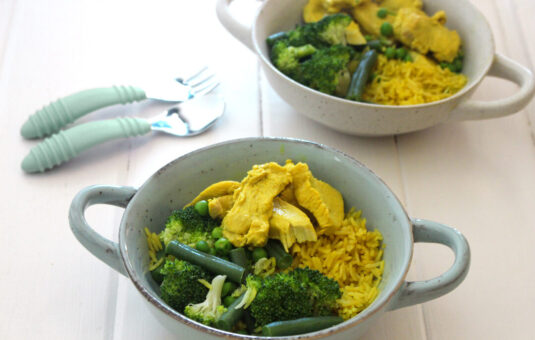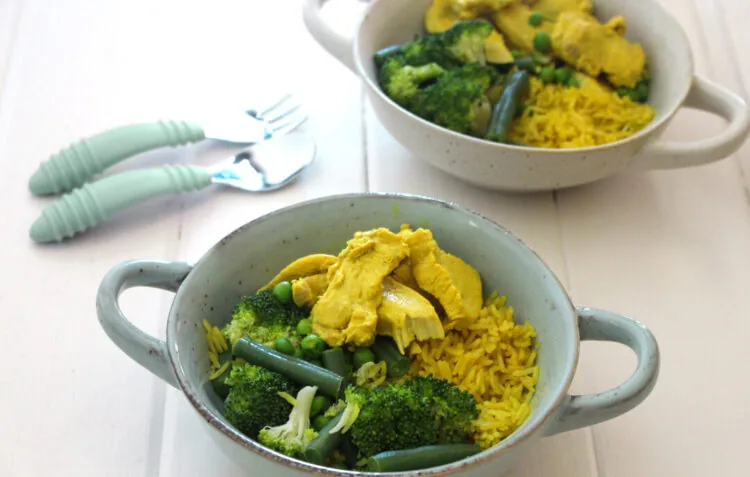Diet & Asthma – What’s The Link?


What is Asthma?
Asthma is a health problem that makes it difficult to breathe. It can cause episodes of wheezing, shortness of breath, chest tightness and coughing, particularly in the early morning and evening. Some people compare the symptoms of asthma to breathing through a straw. This happens because airways in the lungs become inflamed and narrow.
What Causes Asthma?
Unfortunately, there is no known cause for asthma and triggers will often be different for each child. Some common triggers include:
-
Breathing in allergens such as dust, pollen, dander from animals and mould
-
Breathing in things that irritate your airways, like cigarette smoke, perfume and chalk dust
-
Viral infections
-
Weather changes
-
Exercise
-
Food allergies or intolerances
Diet and Asthma: Is There a Link?
Food is not a common trigger for asthma, although in a small number of children and people, food can trigger an asthma attack. This is usually the result of a food allergy or chemical intolerance. Only 2.5% of all people with asthma are affected by food and drinks. Despite what people commonly think, milk is rarely a trigger for asthma.
Whilst there is no specific diet recommended for asthma sufferers, there is emerging evidence that healthy eating is beneficial for maintaining airway health. There are specific foods and nutrients that may help support lung function and thereby improve asthma symptoms.
Foods to Focus On
1. Omega-3 Fats
A clinical trial led by La Trobe University showed that eating fish such as salmon, trout and sardines as part of a healthy diet can reduce asthma symptoms in children. Fatty fish is high in omega-3 fatty acids which have anti-inflammatory properties. The study found that eating fish just twice per week significantly decreased lung inflammation in children with asthma.
To help convince picky eaters to eat seafood, you can try the following:
-
Start with mild-tasting white fish, marinated in a flavour they enjoy, like honey mustard or soy
-
Make fish nuggets by cutting the fish fillet into strips, coating with breadcrumbs and baking in the oven
-
Make tuna sandwiches fun by using cookie cutters to shape them like flowers, hearts, or stars.
2. Fruits and Vegetables
A diet high in antioxidant rich foods such as fruit and vegetables has been shown to reduce the risk of asthma flare ups and improve lung function when compared to a low antioxidant diet. To boost the antioxidants in your child’s diet, ensure you are offering 5 serves of vegetables and 2 serves of fruit every day.
To encourage your child to eat more veggies, try and serve at least three different types of vegetables for dinner every night, allowing them to select which two they want to eat. Remember to keep the flavours simple – the more toppings and sauces, the more likely they are to run into an ingredient they don’t like. Also, remember to mix it up by serving roasted or grilled vegetables. These cooking methods bring out the natural sweetness in vegetables, which makes them more appealing to children.
3. Foods Rich in Vitamin D
The body’s main source of vitamin D comes from exposure to sunlight, however smaller amounts can also be obtained through food. Food sources containing vitamin D include; oily fish such as salmon, tuna and sardines, eggs, mushrooms and also foods that have been fortified with vitamin D such as milk and cereal. Whilst vitamin D supplementation has been thought to play a role in reducing the risk of asthma flare ups, the findings have been inconsistent and there is not enough high-quality evidence to recommend routine vitamin D supplementation in asthma management. In saying that, ensuring your child is receiving adequate vitamin D in their diet is important, particularly for bone and muscle health.
4. Dairy
Dairy foods have often been associated as a common trigger for asthma, but there is little scientific evidence to support this myth. In fact, research suggests that dairy may help protect children against becoming asthmatic. A study of over 3,000 preschool children found that children who ate dairy foods every day had significantly fewer asthma symptoms than children who didn’t.
In addition to this, research has found that children who obtained more calcium from food were less likely to wheeze. Additional research suggests that calcium may account for only part of milk’s anti-asthma benefits and its high magnesium content may also play a role. Milk is a great source of both calcium and magnesium.
Foods to Limit
1. Trans Fats
Diets high in unhealthy fats, such as trans fats, have been shown to increase the risk of poor asthma control by promoting inflammation. Major sources of unhealthy fats are fast food (like hot chips and chicken nuggets) and other fried or oily snacks.
2. Sulphites
Sulphites are additives often used in processed foods as preservatives. Common foods including sulphites are fruit juices, canned fish and dried fruit. When reading a product’s nutrition information panel, sulphites may be listed as numbers 220-228.
3. Food Colourings
Although it is very rare, some food colourings such as the yellow food dye tartrazine can trigger asthma attacks. Generally, we recommend if your child reacts to one particular food colouring, they should avoid eating any food colourings. When reading a product’s nutrition information panel, look out for these numbers to avoid food colourings: 102, 107, 110, 122-129, 132, 133, 142, 151, 155.
4. Salicylates
Research indicates that around 5-10% of people with asthma are sensitive to salicylates. These are naturally occurring food chemicals present in many healthy foods, including honey, soy sauce, tomato paste and tomato sauce. The drug aspirin (acetylsalicylic acid) is also a salicylate. Other non-steroidal anti-inflammatory drugs (NSAIDs) may also trigger dangerous attacks in people who are sensitive to aspirin.
5. Monosodium Glutamate (MSG)
MSG is a naturally occurring chemical which has been lined to causing asthma attacks. It is frequently used as an additive to enhance flavour, particularly in savoury snack foods. Foods that contain high concentrations of MSG include stock cubes, gravy, soy sauce and packet soups. When reading a product’s nutrition information panel, MSG may be listed as numbers 620-625.
A healthy diet and being physically active is important for all young children, especially those with asthma. Eating a wide variety of foods from the five food groups will provide the range of nutrients children need to grow and develop optimally. It is useful to include the healthy foods mentioned throughout this article to improve airway health and to be aware of foods that may trigger asthma related symptoms in some children.
For more great reading see:
Brain Boosting Foods For Children
Only About Children can help your child to grow, make friends and explore the world.
Only About Children can help your child to grow, make friends and explore the world.
Related Reads


Talking To Young Children After Traumatic Events
Discussing traumatic events with children is crucial for helping them understand and accept what's happening in their world.

MasterChef Tommy Pham's Coconut Turmeric Chicken With Rice & Greens
MasterChef Tommy Pham has teamed up with our Dietitians Anna & Alex to create a delicious and nutritious lunch option for children to enjoy in campus - Tommy's Coconut Turmeric Chicken/Chickpea with Rice & Greens. Campus cooks will be preparing Tommy's lunch recipe as part of our delicious, rotating Autumn Menu in campuses. Sound delish? Try the recipe at home!
